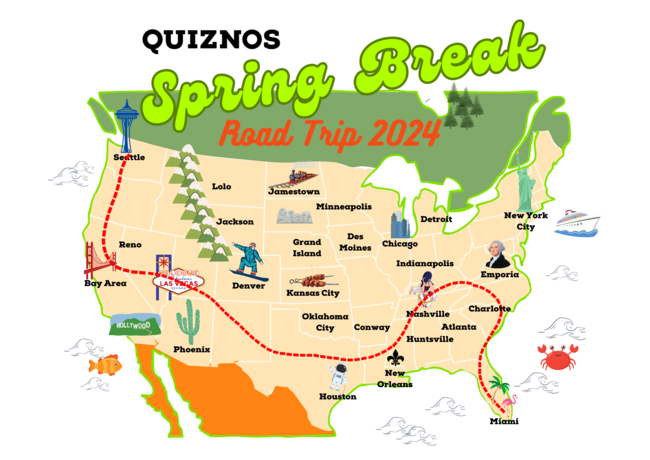Being able to stand out and leave a lasting impression in the ever changing world of content marketing, where customers have short attention spans and are inundated with information, is extremely difficult. Let us introduce you to the art of storytelling, a potent instrument that goes beyond the transactional aspect of marketing and cultivates strong emotional bonds with viewers. Whether you’re a marketing professional looking to stay ahead of the curve or someone starting a new career, a comprehensive digital marketing online course is your gateway to success. We delve into the complexities of storytelling in content marketing in this thorough analysis, revealing the strategies that foster emotional bonds, grab readers’ interest, and foster brand loyalty.
I. Storytelling’s Power in Content Marketing
- Beyond Aspects and Advantages
Although features and advantages are crucial, storytelling gives material a deeper, more relatable level. It makes a good or service seem less like a transactional thing and more like a character in a story, giving customers a better idea of how it can fit into their life.
- Arousing Feelings
Storytelling possesses a special power to arouse feelings. Emotional ties—happiness, empathy, enthusiasm, or nostalgia—are what motivate consumers to make choices. Brands can establish connections with their audience beyond logical reasoning by producing content that speaks to their emotions.
- Establishing a Personal Brand
Stories help to define a brand’s identity. They give its mission, values, and personality definitions. Brands can become more memorable and relatable to consumers by creating a distinctive identity in their thoughts through consistent and captivating storytelling.
II. The Components of Powerful Narration
- Alluring Personas
Characters are what drive a story when they are told. Whether they are fictional personas or the brand itself, characters need to be likable, real, and able to evoke empathy. Customers have a deeper connection with actual or imagined persons than they do with intangible ideas.
- Interesting Storyline
The plot must be well-written in order to keep the audience interested. The story should flow organically and have a distinct beginning, middle, and end. In order to keep the audience interested, it should introduce obstacles, conflicts, and resolutions while building tension and expectation.
- Genuineness
The foundation of any successful narrative is authenticity. Real stories can be separated from manufactured ones by audiences. Sincere narratives foster trust, and enduring partnerships are built on trust. Stories that are true to their audience’s reality and in line with brand values should be the goal of brands.
- Sensitivity to Emotion
Audiences are bonded to stories via emotions. Stories that make people laugh, feel inspired, or feel empathy are more likely to stick in people’s minds and be shared. What turns a brand from a commodity into an important aspect of a consumer’s life is emotional resonance.
III. Techniques for Telling Stories in Content Marketing
- The Journey of the Hero
A protagonist is taken on a transforming trip in Joseph Campbell’s popularized storytelling framework, The Hero’s Journey. Companies can use this framework by making the consumer the protagonist, highlighting their struggles, the brand acting as a mentor, and the product or service acting as a tool to help them along the way.
- Connectable Tales
A brand may become more human by sharing relatable stories. Stories that share a founder’s story, consumer endorsements, or behind-the-scenes looks foster a sense of community. They promote authenticity and relatability by letting the audience see the human aspect of the company.
- Using Pictures to Tell Tales
Visual components amplify the power of narrative. Storylines can be made more interesting and memorable by incorporating pictures, videos, infographics, and other visual materials. By engaging the audience’s senses and emotions, visual storytelling produces a more immersive experience.
- Telling Stories in Sequence
A tale divided into several chapters or episodes can hold the attention of the viewer for extended periods of time. The plot is maintained by serial storytelling, which entices viewers to check out the upcoming episode. This method works very well for creating excitement and involvement.
- Interactive Storytelling
Interactive narratives involve the audience as active players in the story by inviting their participation. Interactive elements such as surveys, games, and choose-your-own-adventure stories draw in viewers and enhance the storytelling experience.
IV. Acknowledging the Effect: Emotional Bonds in Motion
- Nike: “Take It On”
Nike’s “Just Do It” advertising campaign is a classic illustration of poignant narrative. The campaign highlights the virtues of tenacity, perseverance, and accomplishment rather than only highlighting the attributes of Nike gear. Through the incorporation of motivational narratives about athletes conquering obstacles, Nike has established a strong emotional bond with its target market.
Airbnb’s motto is “Belong Anywhere.”
The “Belong Anywhere” campaign from Airbnb highlights the platform’s ability to connect people and promote a sense of belonging by sharing the tales of hosts and guests. The poignant tales highlight a range of viewpoints and life experiences, enhancing Airbnb’s marketing image as an agent of deep relationships.
- “Year in Search” on Google.
Every year, Google releases “Year in Search” videos that take viewers on poignant excursions reflecting on the occasions and queries that defined the year. By gathering actual search terms, Google crafts a story that speaks to a worldwide audience, encapsulating the year’s highs and lows and highlighting the significance of the search engine in people’s lives.
- Real Beauty Campaign by Dove
Dove’s Real Beauty Campaign recounts the tales of real women who embrace their individual beauty and questions conventional notions of beauty. Dove’s celebration of authenticity and diversity has helped the company build a strong emotional bond with customers who value its dedication to fostering true self-worth.
V. Overcoming Storytelling Obstacles
- Seeking True Narratives
Effective storytelling starts with authentic stories, but it can be difficult to locate them. Companies ought to take the time to get to know their customers, hear about their experiences, and find narratives that are consistent with their core beliefs.
- Preserving Uniformity
It’s critical to keep storytelling consistent across all platforms and channels. The audience may become confused and the brand’s identity diluted by inconsistencies. In order to guarantee a coherent tale, brands should set explicit criteria for storytelling.
- Harmonizing Knowledge and Feelings
Even though emotion is a potent storytelling device, it’s crucial to balance it with factual information. It is imperative for brands to craft narratives that effectively communicate essential messaging and product details while maintaining an emotional bond.
Adapting to the Preferences of the Audience
As audience habits and tastes change, brands need to modify their storytelling tactics accordingly. Remain aware of cultural developments, track engagement metrics, and evaluate audience feedback frequently to ensure that storytelling techniques are still applicable and successful.
VI. Storytelling’s Future in Content Marketing
- Technologies Immersive
Storytelling will be redefined by the incorporation of immersive technologies like augmented reality (AR) and virtual reality (VR). Brands will be able to craft interactive, immersive stories that take viewers into virtual environments and heighten the emotional effect of storytelling.
- AI-powered personalization
Artificial intelligence (AI) developments will make it possible for brands to mass customize narrative experiences. Through the analysis of user data, AI algorithms are able to provide personalized content that corresponds with individual tastes, resulting in more relevant and meaningful relationships.
- Storytelling Created by Users
There might be more user-generated narrative in the future. Brands have the ability to enable their audience to share their stories, participate in narratives, and co-create content. This cooperative strategy builds a brand’s sense of community and improves authenticity.
- Combining Transient Content
Stories on apps like Instagram and Snapchat are examples of ephemeral content that presents companies with fresh narrative possibilities. Ephemeral content’s genuine and transient qualities fit very nicely with storytelling concepts, making room for more impromptu and rapid narratives.
Conclusion: The Infinite Canvas of Emotional Narrative
The craft of storytelling serves as a guiding light of resonance and connection in the fast-paced world of content marketing, when attention is in short supply and competition is intense. Brands have the ability to go beyond transactional relationships and create enduring connections with their audience by appealing to the emotional core of human experiences.
In content marketing, the power of narrative extends beyond short-term interaction; it establishes long-lasting bonds. The stories that brands tell will change along with them. Immersion experiences, technological customisation, and a collaborative strategy that blurs the boundaries between audience and brand are all promising developments in the future of storytelling.
Ultimately, the goal is to craft a narrative that becomes a part of the customer’s own story, not merely to sell goods or services. The ability to create emotional connections via narrative is a timeless activity, and as brands negotiate the constantly shifting terrain, the possibilities for doing so are limitless. It is a journey of understanding, compassion, and common experiences that is reflected in each word, picture, and feeling that we use to convey our tales. Discover Digital Marketing Courses here.







